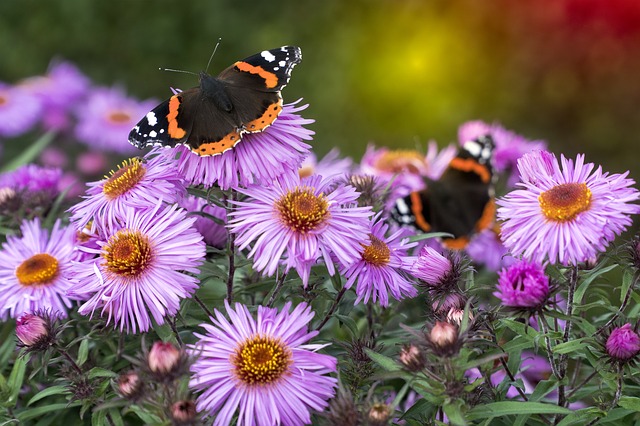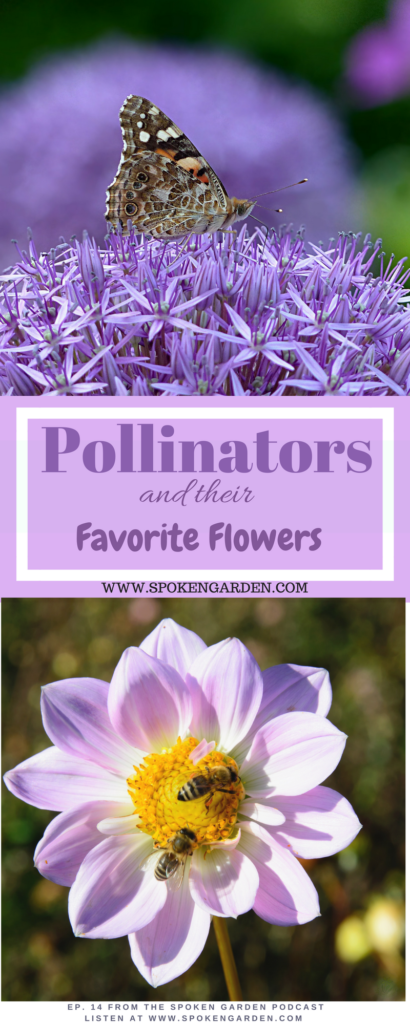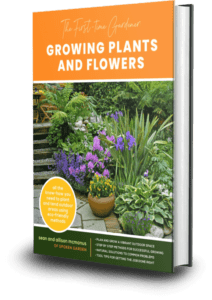Learn how to attract more pollinators to your garden using some of their favorite flowers.
You want to attract more pollinators into your garden, but you’re not sure how to begin.
Which specific plants could you add to entice hummingbirds, bees, and other important visitors?

In our “Garden Pollinators and Their Favorite Flowers” found out how! This episode is for those of you who are new to pollinator gardening and are looking for help with the basics of attracting pollinators.
On Episode 14, we answer these questions and prepare you to make decisions on which plants will encourage more pollinator activity.
Also, we will discuss how grouping flowers and their colors can make a big impact in your garden in our “That’s good to know” segment!
By the end of this episode, you should be able to start seeing more hummingbirds, bees, and other wildlife in your garden.
Pollinator Garden
What is the best way to attract pollinators?
Be intentional by planting a pollinator-friendly garden!
Bees, birds, and butterflies are attracted to a variety of different shapes, colors, and scents.
Here are a few tips for you to get started:
- Introduce a variety of plants in your yard that are both native and non-native to your area.
- Add a variety of flower shapes, aromas, and sizes to your yard, such as large disc-shaped flowers and “trumpet-shaped” flowers.
- Plant flowers that will bloom in your yard from the start of spring to mid to late fall so pollinators will continue to be in your yard throughout most of the year.
All of these tips will help you attract a greater number of pollinators of varying shapes and sizes!
For more listen to the full podcast episode above.
And hey—before you head out—if you want to connect with us and subscribe to our newsletter go to Spoken Garden’s free resource page! We have FREE garden content we are so excited to give to you, like cheat sheets, plant profile sheets, etc! See you there!
Thanks for Listening!!
Share your thoughts:
-
Leave a note in the comment section below.
-
Leave comments/ suggestions at seanandallison@eseospace.dev or Spokengarden@gmail.com
-
Share our show on Twitter, Facebook, or Pinterest
To help out our show:
-
Leave a review on iTunes. Your ratings and reviews really help us out!
-
Subscribe on iTunes or Spotify.
*Spoken Garden is a participant in the Amazon Services LLC Associates Program, an affiliate advertising program designed to provide a means for sites to earn advertising fees by advertising and linking to Amazon.com.
Learn how to attract more pollinators to your garden using some of their favorite flowers.

Save “Garden Pollinators and Their Favorite Flowers” directly to your Pinterest page for later!
*Spoken Garden is a participant in the Amazon Services LLC Associates Program, an affiliate advertising program designed to provide a means for sites to earn advertising fees by advertising and linking to Amazon.com.
Subscribe on iTunes
Today’s Topic:
Garden Pollinators and Favorite Flowers!
Learn how to attract certain pollinators to your garden by planting specific plants!
Downloads:
Coming soon:
Show Notes
Pollinator cheat sheet
“And That’s Good to Know” Segment
Flower Color Combinations
What You’ll Learn:
- How to best attract 3 specific types of pollinators, including hummingbirds, Mason bees, and bumblebees.
- Specific flowers to plant for specific types of pollinators.
- Tips on how to attract pollinators in general.
- How to use certain flower color combinations for curb appeal.
- How to group plants into clusters by odd numbers
Resources:
Some of the resources below may be affiliate links, meaning we might get paid a commission (at no extra cost to you) if you use that link to make a purchase.
- How to Attract Pollinators To Your Garden Like a Boss!
- Top 5 Best Pollinators You Should Attract To Your Garden Right Now!
- Ep. 20: How to Design and Build Your Own Pollinator Garden For Any Season!
- Bonus ep. 3: Renting Mason Bees
- Hummingbirdsociety.org
- bumblebeeconservation.org
- nwf.org (National Wildlife Federation) and click on “Certify.”
Recommended Products Related To This Podcast:


